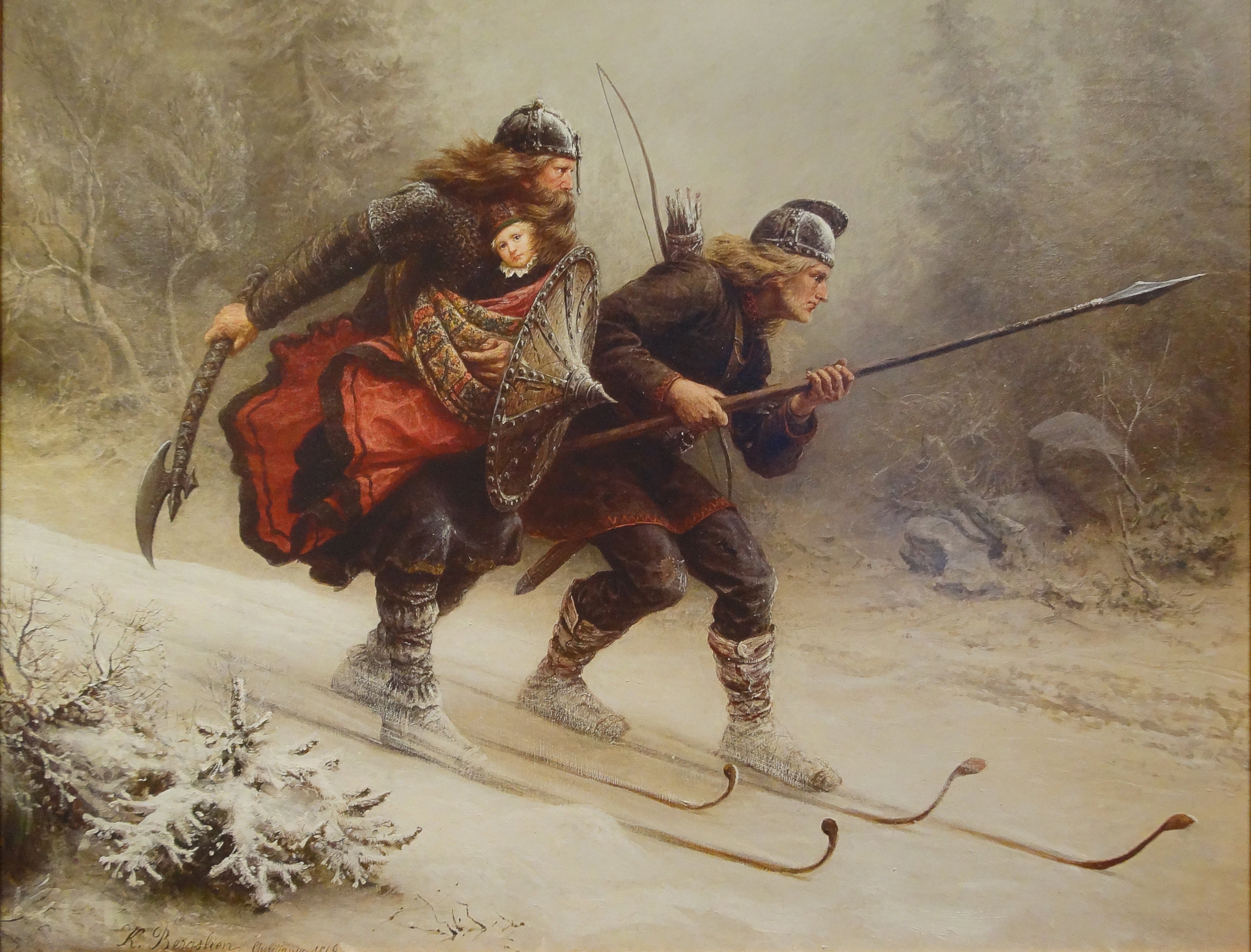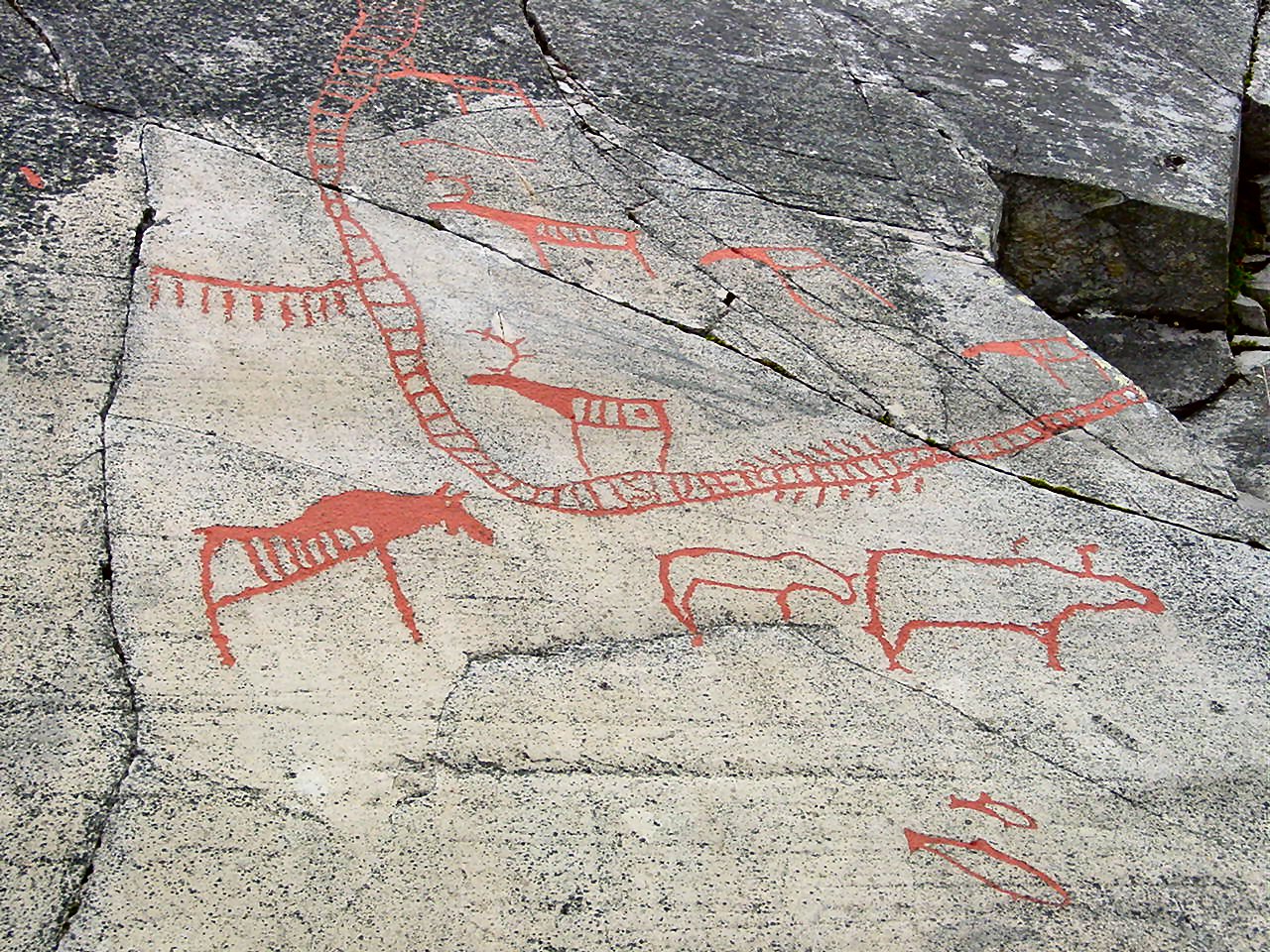|
Sigurd Magnusson
:''Sigurd Magnusson was also the name of Sigurd I of Norway.'' Sigurd Magnusson (ca. 1180 – 3 April 1194) was a Norwegian nobleman who campaigned against King Sverre of Norway during the Civil war era in Norway. Background Sigurd Magnusson was the son of King Magnus V of Norway and Gyrid Aslaksdatter. Sigurd Magnusson was the only publicly acknowledged son of King Magnus. Several years of warfare with Sverre Sigurdsson had ended with the defeat and death of King Magnus in the Battle of Fimreite (''Slaget ved Fimreite'') in 1184. In the aftermath, groups made up principally of the Norwegian aristocracy, clergy and merchants was formed to depose King Sverre. The young Sigurd was proclaimed to be King of Norway in 1193 at the Haugating near Tønsberg. As the son of Magnus Erlingsson, Sigurd was the nominal king supported by the so-called Isle Beards ('' Eyjarskeggjar'') from Shetland and Orkney. The real leader was Hallkjell Jonsson, who had been a son-in law of Erling Skakk ... [...More Info...] [...Related Items...] OR: [Wikipedia] [Google] [Baidu] |
|
 |
Battle Of Florvåg
The Battle of Florvåg ( no, Slaget ved Florvåg) was a naval battle that was fought on 3 April 1194 between King Sverre Sigurdsson, leader of the Birkebeiner party, and Sigurd Magnusson, the Eyjarskeggjar party pretender. Although there had been previous revolts during Sverre's reign following his usurpation of the throne in 1184, the revolt in support of Sigurd Magnusson (son of former king Magnus Erlingsson) became far more threatening than the attempts of previous pretenders. In a larger context, the battle was part of the century-long civil war era in Norway. As Sigurd was a minor, the actual leaders behind the revolt were Hallkjell Jonsson and Olav Jarlsmåg. The Eyjarskeggjars recruited their initial army in Orkney and Shetland (hence their name, meaning "island-men"), returned to Norway in 1193, and quickly took control over a large part of the country. Based in Bergen for the winter, the Eyjarskeggjar fleet relocated to the nearby bay of off Askøy in anticipation of th ... [...More Info...] [...Related Items...] OR: [Wikipedia] [Google] [Baidu] |
 |
Sigurd I Of Norway
Sigurd Magnusson (1089 – 26 March 1130), also known as Sigurd the Crusader (Old Norse: ''Sigurðr Jórsalafari'', Norwegian: ''Sigurd Jorsalfar''), was King of Norway (being Sigurd I) from 1103 to 1130. His rule, together with his half-brother Øystein (until Øystein died in 1123), has been regarded by historians as a golden age for the medieval Kingdom of Norway. He is otherwise famous for leading the Norwegian Crusade (1107–1110), earning the eponym "the Crusader", and was the first European king to personally participate in a crusade.Literally "Jerusalem-farer", but commonly translated into English as "the Crusader". Early life Sigurd was one of the three sons of King Magnus III, the other two being Øystein and Olaf. They were all illegitimate sons of the king with different mothers. To avoid feuds or war, the three half-brothers co-ruled the kingdom from 1103. Sigurd ruled alone after Olaf died in 1115 and Øystein in 1123. Before being proclaimed King of Norway, ... [...More Info...] [...Related Items...] OR: [Wikipedia] [Google] [Baidu] |
|
Birkebeiner
The Birkebein Party or Birkebeinar (; no, Birkebeinarane ( nynorsk) or ( bokmål)) was the name for a rebellious party in Norway, formed in 1174 around the pretender to the Norwegian throne, Eystein Meyla. The name has its origins in propaganda from the established party that the rebels were so poor that they made their shoes of birch bark. Although originally a pejorative, the opposition adopted the ''Birkebeiner'' name for themselves, and continued using it after they came to power in 1184. Today, the Birkebeins are popularly celebrated for having escorted the two-year-old Haakon Haakonsson, an heir to the Norwegian throne, safely from Lillehammer to Østerdalen to Trondheim, a long and perilous journey through treacherous mountains and forests. This is commemorated through cross-country ski races, Birkebeinerrennet and Birkebeinerrittet. Background The Civil war era in Norway (''borgerkrigstiden'') is a term used for the period between 1130 and 1240 in the hist ... [...More Info...] [...Related Items...] OR: [Wikipedia] [Google] [Baidu] |
|
|
Heimskringla
''Heimskringla'' () is the best known of the Old Norse kings' sagas. It was written in Old Norse in Iceland by the poet and historian Snorre Sturlason (1178/79–1241) 1230. The name ''Heimskringla'' was first used in the 17th century, derived from the first two words of one of the manuscripts (''kringla heimsins'', "the circle of the world"). ''Heimskringla'' is a collection of sagas about Swedish and Norwegian kings, beginning with the saga of the legendary Swedish dynasty of the Ynglings, followed by accounts of historical Norwegian rulers from Harald Fairhair of the 9th century up to the death of the pretender Eystein Meyla in 1177. The exact sources of the Snorri's work are disputed, but they include earlier kings' sagas, such as Morkinskinna, Fagrskinna and the 12th-century Norwegian synoptic histories and oral traditions, notably many skaldic poems. He explicitly names the now lost work '' Hryggjarstykki'' as his source for the events of the mid-12th century. Alth ... [...More Info...] [...Related Items...] OR: [Wikipedia] [Google] [Baidu] |
|
|
Sverris Saga
''Sverris saga'' is one of the Kings' sagas. Its subject is King Sverre Sigurdsson of Norway (r. 1177–1202) and it is the main source for this period of Norwegian history. As the foreword tells us, the saga in its final form consists of more than one part. Work first began in 1185 under the king’s direct supervision. It is not known when it was finished, but presumably it was well known when Snorri Sturluson began writing his ''Heimskringla'' in the 1220s since Snorri ends his account where ''Sverris saga'' begins. Thus the saga is contemporary or near-contemporary with the events it describes. The saga is obviously written by someone sympathetic to Sverre’s cause, but the strict demands of the genre ensure some degree of impartiality. Authorship and composition The first distinct part of the saga is called ''Grýla'' and describes the events until the aftermath of Sverre's first major victory at the Battle of Kalvskinnet (''slaget på Kalvskinnet'') outside Nidaros i ... [...More Info...] [...Related Items...] OR: [Wikipedia] [Google] [Baidu] |
|
 |
Bagler
The Bagli Party or Bagler (Old Norse: ''Baglarr'', Norwegian Bokmål: ''Bagler'', Norwegian Nynorsk: ''Baglar'') was a faction or party during the Norwegian Civil Wars. The Bagler faction was made up principally of the Norwegian aristocracy, clergy and merchants. It was formed in Skåne, then part of Denmark, in 1196 principally by Bishop Nicholas Arnesson of Oslo and Archbishop Erik Ivarsson (ca. 1130–1213) of Nidaros around the pretender Inge Magnusson (nicknamed the Baglar-King) to depose King Sverre Sigurdsson. It contested with the Birkebeiners, essentially a faction of peasants, led by the pretender King Sverre, for control in a Norwegian civil war during the late 12th century. Sverris saga provided Sverre a royal lineage as putative bastard son of the late king Sigurd II of Norway, which in the Norway of the time provided him a claim to the throne. Historians generally agree with the consensus of his time that he was a pretender/ impostor. The civil wars period o ... [...More Info...] [...Related Items...] OR: [Wikipedia] [Google] [Baidu] |
|
Order Of Succession
An order of succession or right of succession is the line of individuals necessitated to hold a high office when it becomes vacated such as head of state or an honour such as a title of nobility.UK Royal Web site "The order of succession is the sequence of members of the Royal Family in the order in which they stand in line to the throne. This sequence is regulated not only through descent, but also by Parliamentary statute." This sequence may be regulated through descent or by statute. Hereditary government form differs from |
|
 |
History Of Norway
The history of Norway has been influenced to an extraordinary degree by the terrain and the climate of the region. About 10,000 BC, following the retreat inland of the great ice sheets, the earliest inhabitants migrated north into the territory which is now Norway. They traveled steadily northwards along the coastal areas, warmed by the Gulf Stream. They were hunter-gatherers whose diet included seafood and game, particularly reindeer as staple foods. Between 5,000 BC and 4,000 BC the earliest agricultural settlements appeared around the Oslofjord. Gradually, between 1500 BC and 500 BC, agricultural settlements spread to the entire south Norway, while the inhabitants of the regions north of Trøndelag continued to hunt and fish. The Neolithic period started in 4000 BC. The Migration Period caused the first chieftains to take control and hilltop forts to be constructed. From the 8th century Norwegians started expanding across the seas to the British Isles and later Iceland and G ... [...More Info...] [...Related Items...] OR: [Wikipedia] [Google] [Baidu] |
 |
Bergen, Norway
Bergen (), historically Bjørgvin, is a city and municipality in Vestland county on the west coast of Norway. , its population is roughly 285,900. Bergen is the second-largest city in Norway. The municipality covers and is on the peninsula of Bergenshalvøyen. The city centre and northern neighbourhoods are on Byfjorden, 'the city fjord', and the city is surrounded by mountains; Bergen is known as the "city of seven mountains". Many of the extra-municipal suburbs are on islands. Bergen is the administrative centre of Vestland county. The city consists of eight boroughs: Arna, Bergenhus, Fana, Fyllingsdalen, Laksevåg, Ytrebygda, Årstad, and Åsane. Trading in Bergen may have started as early as the 1020s. According to tradition, the city was founded in 1070 by King Olav Kyrre and was named Bjørgvin, 'the green meadow among the mountains'. It served as Norway's capital in the 13th century, and from the end of the 13th century became a bureau city of the Hansea ... [...More Info...] [...Related Items...] OR: [Wikipedia] [Google] [Baidu] |
|
St Mary's Church, Bergen
St Mary's Church ( no, Mariakyrkja, Mariakirken) is a parish church of the Church of Norway in Bergen Municipality in Vestland county, Norway. It is located in the Bryggen area in the central part of the city of Bergen. It is one of the churches for the Bergen Cathedral parish which is part of the Bergen domprosti (arch-deanery) in the Diocese of Bjørgvin. The large, gray stone church was built in a long church design using plans drawn up by an unknown architect. The church seats about 240 people. The construction of the church is believed to have started in the 1130s or 1140s and completed around 1180, making this church the oldest remaining building in the whole city of Bergen. There have been a few fires that burned the church, as well as several renovations and reconstructions, most recently in 2013. History St. Mary's Church is the only remaining of the twelve churches and three monasteries that were built in Bergen between its beginnings during the reign of Olav Kyrre (10 ... [...More Info...] [...Related Items...] OR: [Wikipedia] [Google] [Baidu] |
|
 |
Palm Sunday
Palm Sunday is a Christian moveable feast that falls on the Sunday before Easter. The feast commemorates Christ's triumphal entry into Jerusalem, an event mentioned in each of the four canonical Gospels. Palm Sunday marks the first day of Holy Week. For adherents of mainstream Christianity, it is the last week of the Christian solemn season of Lent that precedes the arrival of Eastertide. In most liturgical churches, Palm Sunday is celebrated by the blessing and distribution of palm branches (or the branches of other native trees), representing the palm branches which the crowd scattered in front of Christ as he rode into Jerusalem; these palms are sometimes woven into crosses. The difficulty of procuring palms in unfavorable climates led to their substitution with branches of native trees, including box, olive, willow, and yew. The Sunday was often named after these substitute trees, as in Yew Sunday, or by the general term Branch Sunday. In Syriac Christianity it is oft ... [...More Info...] [...Related Items...] OR: [Wikipedia] [Google] [Baidu] |
|
Gravdal, Hordaland
Gravdal is a neighborhood in the city of Bergen in Vestland county, Norway. It is located in the borough of Laksevåg in the valley between the mountains Damsgårdsfjellet and Lyderhorn. The Byfjorden flows past to the north and the lake Gravdalsvatnet to the south. The western end of the Damsgård Tunnel is located in Gravdal. Nygård Church Nygård Church ( no, Nygård kirke) is a parish church of the Church of Norway in Bergen Municipality in Vestland county, Norway. It is located in the Gravdal neighborhood in the city of Bergen. It is the church for the Nygård parish which is p ... is also located in Gravdal. References Neighbourhoods of Bergen {{Bergen-stub ... [...More Info...] [...Related Items...] OR: [Wikipedia] [Google] [Baidu] |